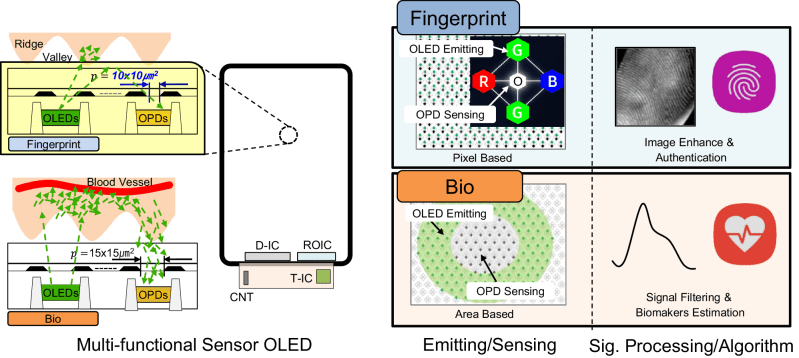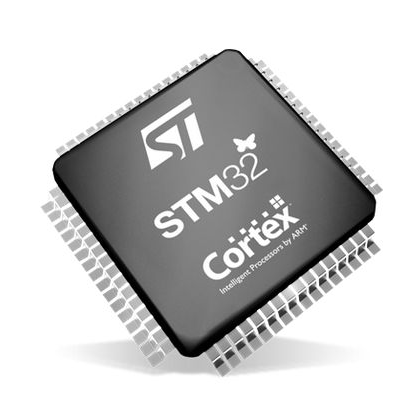These days displays are increasingly expected to be bidirectional devices, accepting not only touch inputs, but also to integrate fingerprint sensing and even somehow combine a camera with a display without punching a hole through said display. Used primarily on smartphone displays, these attempts have been met with varying degrees of success. But a paper published in the Communications Engineering journal describes a version which combines an OLED with photosensors in the same structure — a design that may provide a way to make such features much more effective.
The article by [Chul Kim] and colleagues of the Samsung Display Research Center in South Korea the construction of these bidirectional OLED displays is described, featuring the standard OLED pixels as well as an organic photodiode (OPD) placed side-by-side. Focusing on the OLED’s green light for its absorption characteristics with the human skin, the researchers were able to use the produced OLED/OPD hybrid display for fingerprint recognition, as well as a range of cardiovascular markers, including heart rate, blood pressure, etc.
The basic principle behind these measurements involves photoplethysmography, which is commonly used in commercially available pulse oximeters. Before these hybrid displays can make their way into commercial devices, there are still a few technical challenges to deal with, in particular electrical and optical leakage. The sample demonstrated appears to work well in this regard, but the proof is always in the transition from the lab to mass-production. We have to admit that it would be rather cool to have a display that can also handle touch, fingerprints and record PPG data without any special layers or sensor chips.
















It’s a nice idea, but does a high-resolution smartphone display have enough space to fit OPDs between the pixels?
Theranos when?
Touchscreens are a great technology, but in many cases are just a false cost saving measure or simply a fashion statement. But a lot of people face problems using capacitive touchscreen technology especially elderly. And this has nothing to do with fear of technology, but the mere fact that the technology fails under certain conditions. Keep in mind that eventually we all will be facing these problems!
https://www.gabefender.com/writing/touch-screens-dont-work-for-everyone
https://journals.sagepub.com/doi/full/10.1177/21695067231193656
https://d1h06bsnqv2xsg.cloudfront.net/Images/DigitalExclusion_Report_NoIsolation_Jul2021.pdf
PS: making the screen more sensitive is not a solution, this morning my car registered me pushing a button without me touching the screen yet, I simply was hovering my finger to close to it when reaching for the “button” I really wanted to press. The confusion and annoyance it caused didn’t affect road safety in a very positive way I can tell you. I miss buttons…
PPS: a solution would be using a special capacitive touchscreen stylus, but seriously, didn’t we drop the acceptance of that already 30 years ago?
The problem is in the design of a product a touch screen is just too useful. So many times I will get 3/4 of the way done with a project and need to add a feature or a debug option. If I have a touch screen I just need to fiddle with the software. If I don’t adding a button could mean a complete redesign.
This doesn’t refute anything they said. Touch screen interfaces often seem more intuitive than they are, there is still abstraction, and bad design is rampant. And as said, sensitivity isn’t the only problem, really it’s assessing context and giving feedback. Gestures only get half way there and without tactile feedback they will never work correctly for significant portions of the population, especially elderly. In a way resistive touch screens are actually better for accessibility because you can tell to an extent how hard you are pressing. For any situation where you need to interact without looking the entire interface is useless.
Knobs, toggles and physical buttons are good, they communicate with the user, can be used blindly, and can be designed to have appropriate feedback for the specific use case.
“We have to admit that it would be rather cool to have a display that can also handle touch, fingerprints and record PPG data without any special layers or sensor chips.”
Surveillance state where every touch device is a tattle-tale.
I think the TLAs just bumped you up a level of their watch list!
B^)
I was thinking the same thing – every day we inch closer to the telescreen.